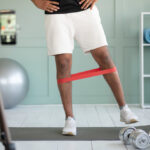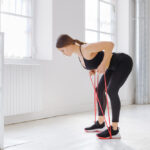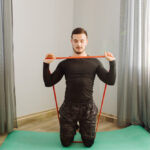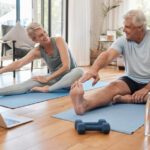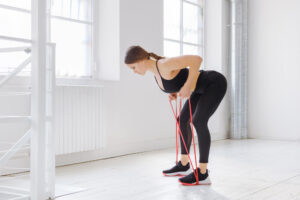When it comes to building strong and balanced shoulders, many people make the mistake of focusing too much on the front and middle deltoids, leaving the rear delts neglected. But if you want those shoulders that really pop—and more importantly, maintain a healthy posture—you can’t afford to skip the rear delts. Training this often-overlooked muscle will not only enhance the aesthetics of your shoulders but also prevent common injuries and improve your overall strength.
So, how do you target those elusive rear delts? Grab your dumbbells, because we’re about to break down the best exercises to build those rear shoulders. Let’s dive in!
1. Bent-over dumbbell reverse fly
This is a staple. The bent-over reverse fly hones in on the rear delts like no other. It’s simple, yet brutally effective.
- How to do it:
- Grab a pair of dumbbells and bend at your hips, keeping your back straight and chest up.
- With a slight bend in your elbows, lift the dumbbells out to your sides until your arms are parallel to the ground.
- Squeeze your shoulder blades together at the top, then lower slowly.
- Tip: Go lighter on weight to avoid overusing your traps—this is all about isolating the rear delts.
2. Dumbbell face pull
This one’s a killer for the rear delts, and it doubles as a shoulder health exercise. Don’t let the awkward setup fool you; it’s worth it.
- How to do it:
- Sit on a bench or stay standing.
- Grab the dumbbells with an overhand grip and bring them up to eye level, elbows flared out, pulling the dumbbells towards your face.
- Focus on leading with your elbows and keeping your upper arms parallel to the ground.
- Why it works: It gives a solid burn in the rear delts while reinforcing the external rotation that’s key for shoulder stability.
3. Incline bench rear delt raise
This is a sneaky way to isolate your rear delts without worrying about momentum swinging in.
- How to do it:
- Set up an incline bench at a 45-degree angle.
- Lie face down on the bench with your chest against the pad.
- Holding dumbbells with a neutral grip, raise them out to your sides, keeping your arms slightly bent.
- Hold for a second at the top to really feel that rear delt contraction.
- Key focus: Keep it slow and controlled. It’s not about how high you lift, it’s about the mind-muscle connection.
4. Dumbbell rear delt row
Rows aren’t just for the back—this variation zeroes in on those rear delts.
- How to do it:
- Stand bent over at the hips, similar to the reverse fly setup.
- Hold the dumbbells with an overhand grip, and instead of rowing straight up, angle your elbows outward to the sides as you lift the weights.
- Keep your torso still to ensure the rear delts are doing the work.
- Pro tip: Focus on pulling with your elbows, not your hands, to ensure maximum engagement of the rear delts.
5. Lying dumbbell reverse fly
This is another variation that’s brilliant for rear delts because it eliminates lower back strain and lets you focus on form.
- How to do it:
- Lie face down on a flat bench, with your arms hanging straight down holding dumbbells.
- With a slight bend in your elbows, lift the dumbbells out to your sides in a flying motion.
- Keep the movement slow and controlled, making sure the rear delts are doing the lifting.
- Why I like this: No cheating! Being on the bench forces you to maintain perfect form.
Why you shouldn’t skip rear delt training
Skipping rear delt exercises is like leaving the back half of your shoulders underdeveloped—this throws off your symmetry and leaves you more prone to shoulder injuries. When your rear delts are weak, your posture suffers, and your chances of shoulder impingement rise. Including these exercises in your routine will not only fill out the back of your shoulders but also help balance out the often overworked front delts.
Final thoughts
Don’t underestimate the power of a strong pair of rear delts. Whether you’re chasing aesthetics or injury prevention, these dumbbell exercises are non-negotiable. You don’t need crazy heavy weights or fancy equipment—just a couple of dumbbells and the willingness to pay attention to form and control. For more fitness tips, read our other blog posts.


